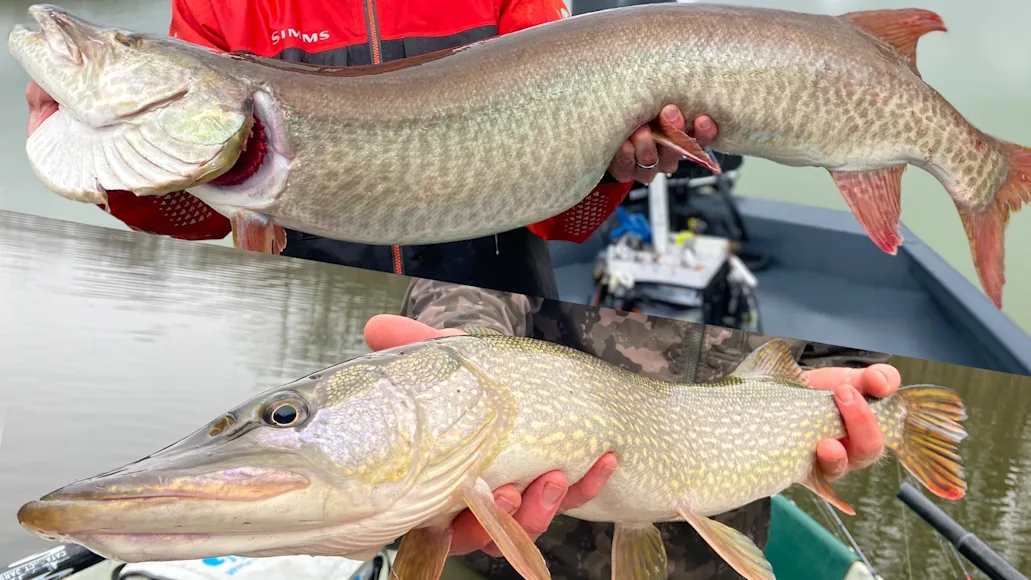If you asked me point blank which is better as a game fish—muskie vs pike—I’m saying pike a thousand times over. This, of course, is just my opinion, but looks aside, the biggest difference between these two cousins is that one is pretty easy to catch regardless of your skill level, and the other has the most devout, diehard experts pulling their hair out more often than not.
I love pike because they’re so more willing to smack your lure compared to muskies. They’re also available to more anglers, and, if you’re fishing in the right place, you can find pike that rival respectable adult muskies in terms of size. It is, however, the unwillingness of muskies to cooperate that make them such an addiction for so many fishermen. Catching a muskie
, especially if it’s a true trophy, is arguably a greater achievement than catching a pile of pike. So, let’s take a closer look at muskie vs pike—so that you can, first, tell them apart, and, second, decide which one you’d rather go after.
How to Identify Muskie vs Pike
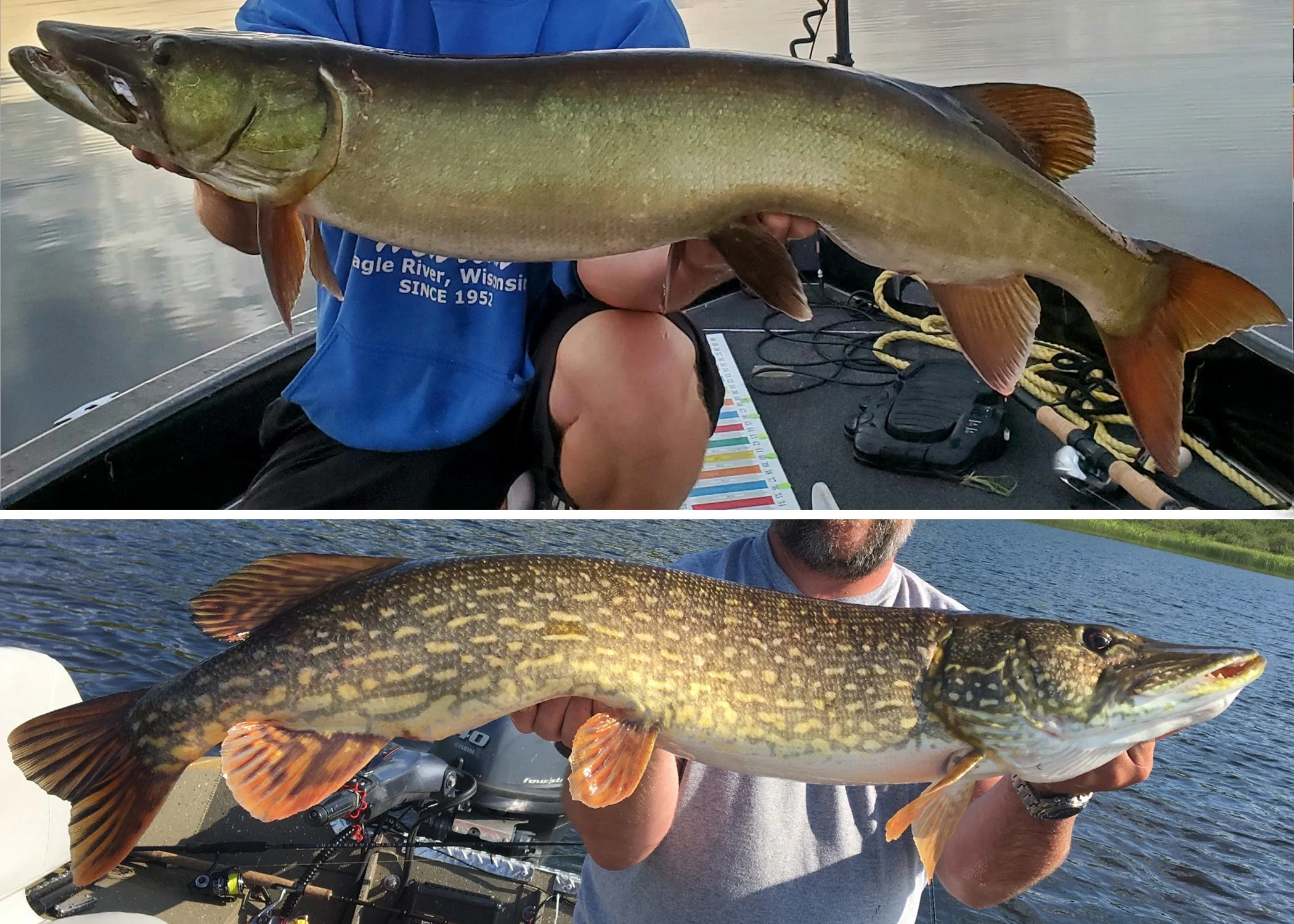
This comparison shows physical differences between a muskie (top) and pike (bottom). Muskie Shop Outfitters / Field & Stream
Key Identifiers
A muskie’s flank shows either little or no pattern, like the one above, or dark bars or spots on a lighter background (see below)
Pike have a chain-like pattern of light-colored spots on a darker gray/green background
A muskie’s tail fin forks sharply, coming to fine points top and bottom
A pike’s forked tail is more rounded and shows dark lines
In terms of body shape, pike and muskies are practically identical. Both feature sharp, sloping, elongated heads that taper to a pointed jaw; each has a mouth full of razor-sharp teeth. They have a single dorsal fin positioned closer to their forked tails. But take a close look at those tails, because one of the key difference between the two species is that the forks of a muskie’s tail will come to sharp points whereas a pike’s tail has rounded edges. Muskies frequently break the 50-inch mark whereas a 50-inch pike—while they do exist—would be once-in-a-lifetime trophy for most anglers. Pike in the 40- to 45-inch range are far more common.
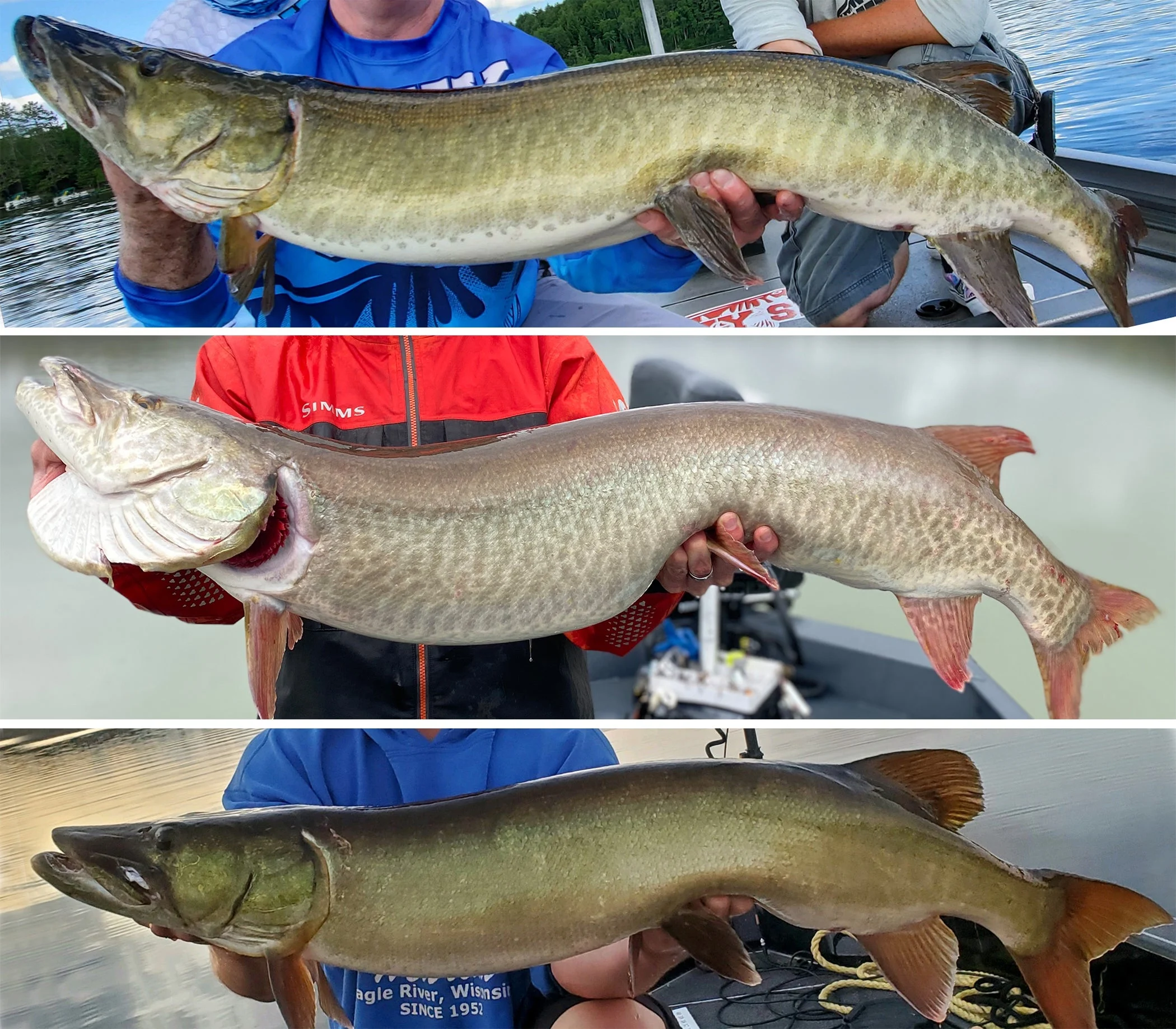
The three common flank patterns on muskie are, from top to bottom, barred, spotted, and clear. Musky Shop Outfitters
Anglers often have the most trouble distinguishing between juvenile pike and muskies, as both can exhibit a vibrant barred pattern on their sides when young. As pike mature, that pattern morphs in a vast series of oval-shaped striation marks. Meanwhile, as muskies mature, the barring can remain vivid or grow so faint it’s hardly visible at all. The pattern on a muskies flank can show more-or-less vertical bars, spots, or, as stated, be nearly one solid color with no obvious markings. How muskie patterns vary can be a product of genetics, environment, or diet in some cases. Pike, conversely, will always have that vivid pattern.
Range and Distribution of Muskie vs Pike

U.S. Geological Survey maps showing the ranges of muskie (left) and pike (right) in the lower 48. U.S. Geological Survey
Northern pike and muskies are members of the Esox family of fish, which also includes chain pickerel and grass pickerel. While they share a good portion of natural range within North American, both are often introduced in regions and water bodies where they wouldn’t normally be found. The native range of the northern pike
covers most of Alaska and Canada, and in the lower 48, from Eastern North Dakota south to Northern Missouri. The range then expands in a northeasterly direction, covering all the northern Midwest states and Great Lakes shorelines through New York and into Vermont. Northern pike have been implanted or found their own way to most of New England, too, as well as throughout much of the Rocky Mountains, from Arizona to Northern Idaho.
The native range of the muskellunge
, on the other hand, is more confined, covering all the northern Midwest states, Great Lakes and their shorelines, Northeastern Canada, and the Ohio River Valley all the way into Tennessee. Pure-strain muskies and tiger muskies (a hybrid cross between a pure-strain muskie and northern pike) have been introduced throughout the country as far south as New Mexico and in many water bodies in the West and southern Midwest.
Pike and Muskie Habitat
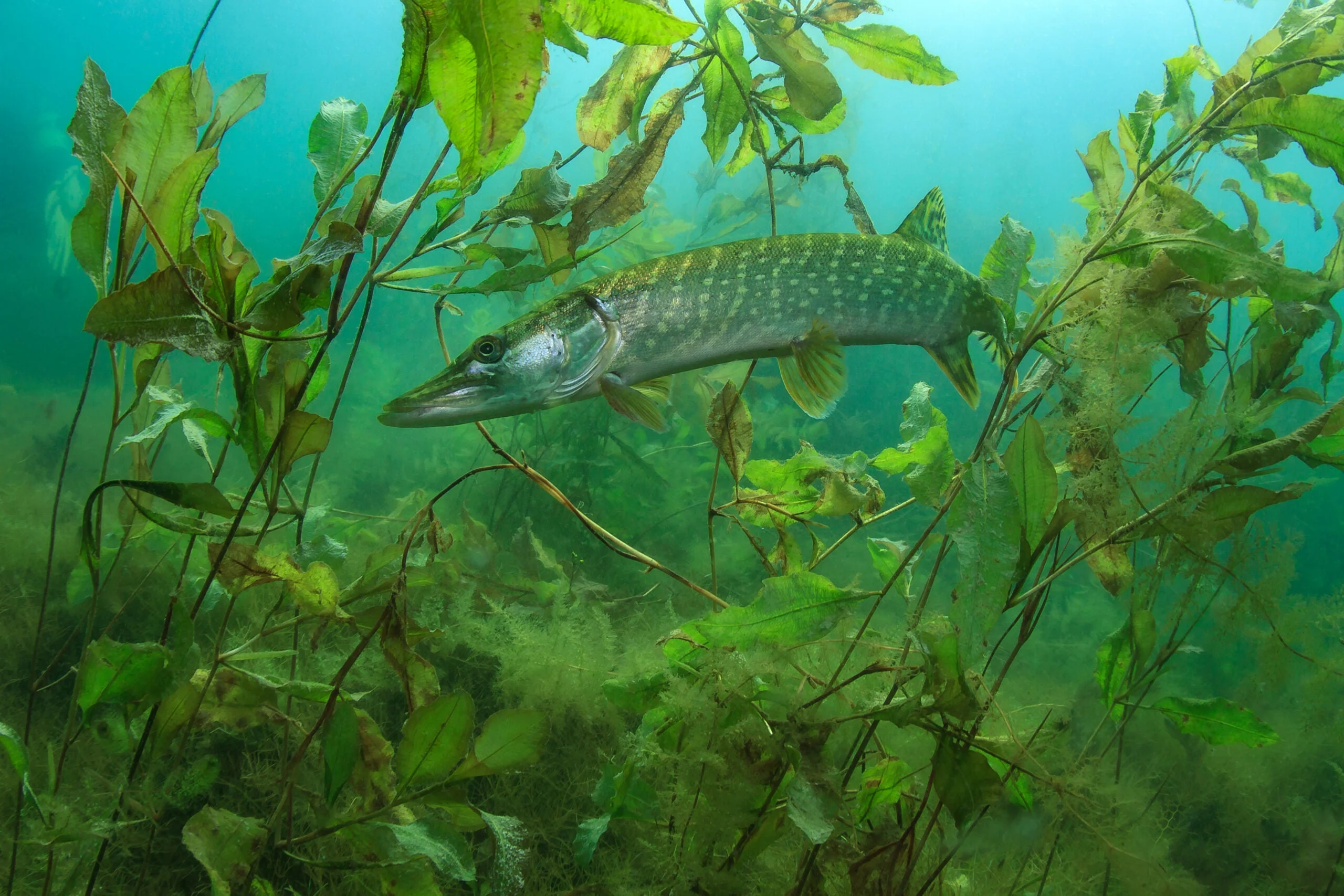
Both pike and muskies are ambush predators that use weedy cover to lie in wait for baitfish. art-design-photography.com / Getty Images
When it comes to muskie vs pike habitat, the two species have very similar needs. The optimal temperature range for growth and feeding is between 55 and 70 degrees, though both species will remain active in much warmer and colder water. Pike are especially comfortable in near-freezing water, which is why they’re such a popular ice-fishing target throughout their range. While neither species particularly loves heavy current, they both thrive in rivers, especially larger ones that provide plenty of soft water and structure that allows them to hang out and ambush prey away from the main flow.
Although both species can be found in rivers and lakes with a predominantly rocky bottom, the best places to fish for trophy pike and muskies usually feature ample aquatic vegetation. Both fish thrive in weedy areas, as the vegetation provides camouflaging cover and a good supply of smaller forage fish like suckers, chubs, bluegills, bass, and perch. Pike and muskies are both frequently caught in water from 3 to 8 feet deep, though access to deeper water (approximately 20 feet or more) is common in locations known for growing giant pike and muskies, as it provides refuge in the heat of summer and a warmer thermocline during the winter months.
Feeding Habits and Sporting Quality
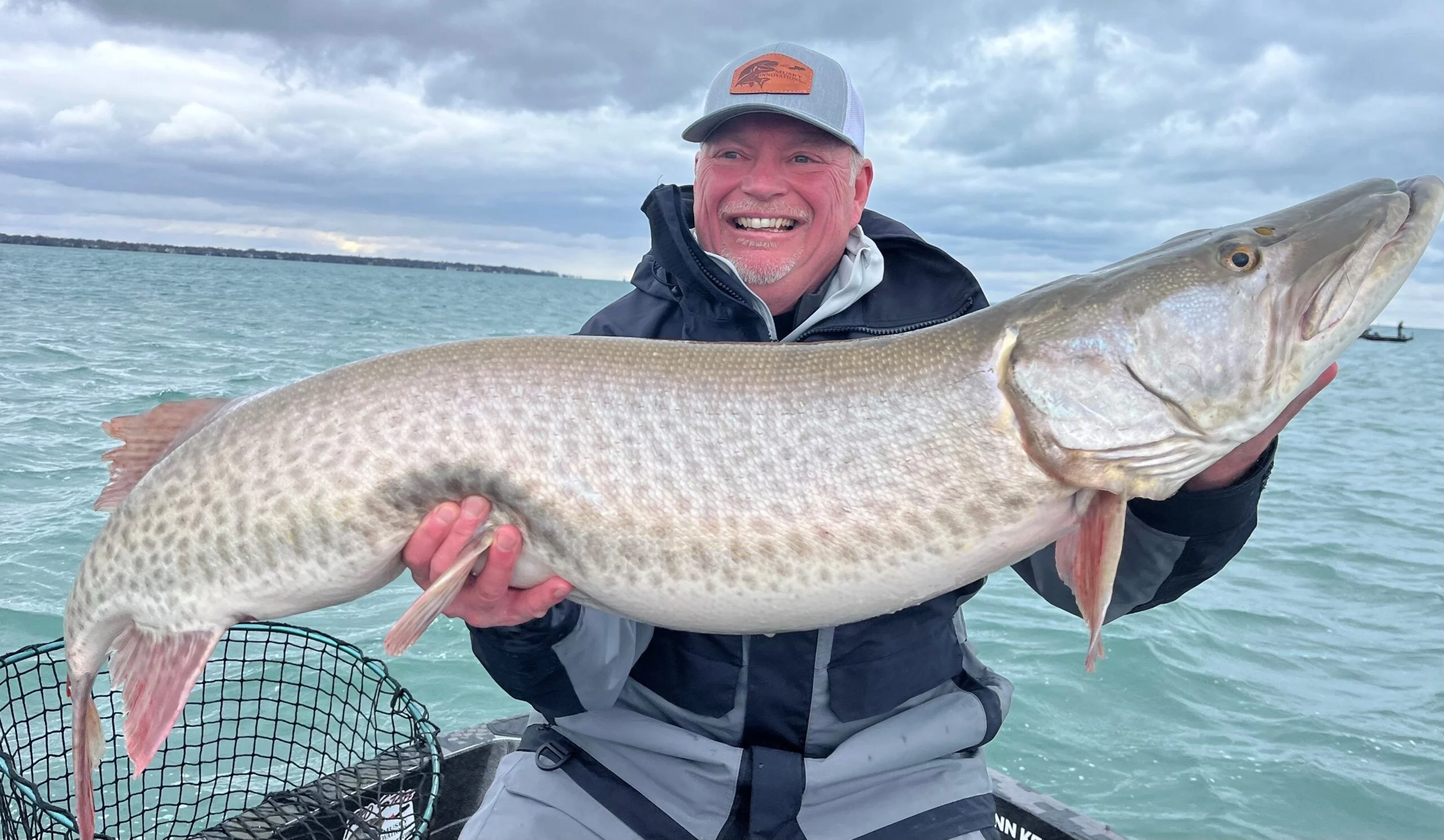
It’s the sheer size of a trophy muskies that makes some anglers obsessed with the species. Brad Rue / Musky Innovations
Years ago, I saw a video filmed at a fish hatchery. There were two fish tanks, one holding a dozen tiny juvenile pike, and the other holding a dozen juvenile muskies. When food pellets were dropped into the pike tank, every fish went wild. It was an all-out feeding frenzy. When the pellets were dropped in the muskie tank, only two of the baby fish moved to grab one. This about sums up the key difference between the two species.
Northern pike are simply less wary and more ravenous than muskies. A trophy muskie may only eat once or twice a week, whereas a trophy northern pike is more likely to grab your lure or bait in a reaction strike regardless of hunger. This also suggests that muskies have a slower metabolism than pike.
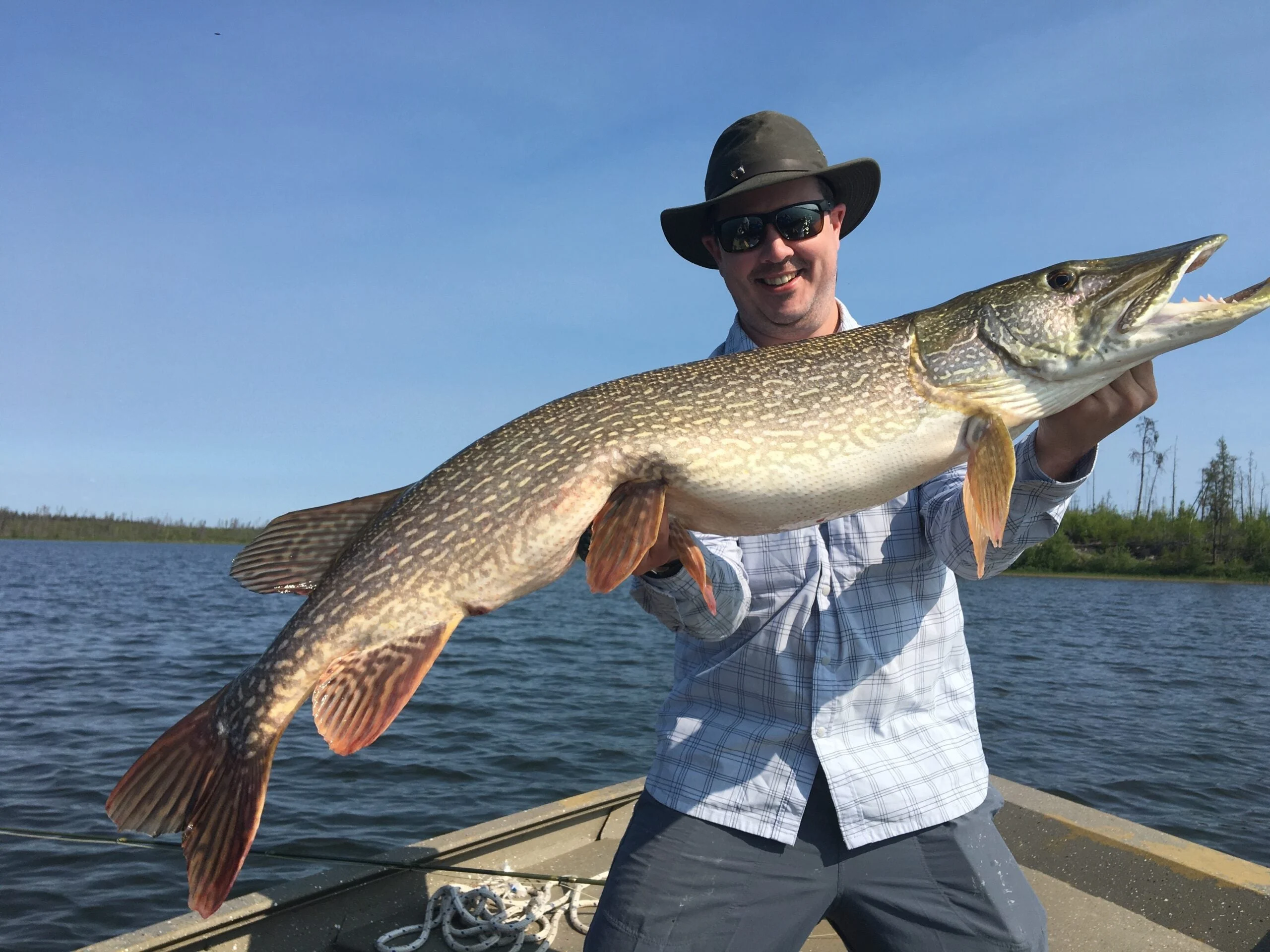
F&S editor-in-chief Colin Kearns shows off a hefty pike from a Canadian lake chock full of them. Colin Kearns
Juvenile muskies can be slightly easier to fool, but it’s rare to catch one after another as you can pike measuring 20 inches or less in a system chocked full of them. Pressure, of course, also factors into this equation. I’ve been to lodges in Northern Canada where 40-plus-inch pike climbed on our lures one after another, all day long. However, these were fish that rarely saw lures at all. In the lower 48, you can expect a pike that big to be a little more wary if it lives on a high-traffic body of water.
In the end, when it comes to the question of muskie vs pike, if need to catch at least a few—and preferably a bunch—of fish to feel like you’ve had a worthwhile day on the water, you’ll probably lean more toward the latter. On the other hand, if you relish a challenge, have lots of patience, and love the idea of catching a true giant, to the point of obsession, then muskies it is. Maybe the best solution if to go out one day and catch enough pike to scratch that itch, then go hunting for a monster muskie the next.

